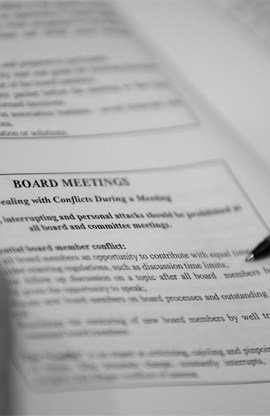By Kristen L. Rosenbeck, Esq.
In preparing for your community association’s upcoming annual meeting one of the most important things to do is to closely review the association’s governing documents (CC&Rs, Bylaws, Rules) to determine if there are any mandatory requirements for the annual meeting of the membership. If the association’s governing documents (likely the Bylaws) require the election of directors must be conducted by secret ballot, the association should develop a streamline process to ensure that the ‘secrecy’ of the ballot but at the same time ensuring that only eligible owners are casting their vote and that there is no voting fraud. The following is a recommended procedure for secret ballots:
1. SEND TO OWNERS: Send owners the election ballot along with two envelopes and instructions on how to return ballots.
2. BALLOT SECRECY: Ballots must ensure the confidentiality of the voters. A voter may not be identified by name, address, or lot, parcel, or unit number on the ballot. The ballot may not require the signature of the voter.
3. BALLOT RETURN: The ballot itself is to be inserted into an envelope (Envelope 1) that is to be sealed by the member. Envelope 1 should not have any markings that may indicate the identity of the voter. A sealed Envelope 1 is to be inserted into a second envelope (Envelope 2) that is to be sealed by the member. In the upper left hand corner of Envelope 2, the voter should include his/her lot/unit number, address, name and signature. Envelope 2 is addressed to the association.
4. BALLOT TALLY: Upon receipt of the vote, the association checks the ballot in by confirming the identity of the voter (by name, unit/lot and signature located on Envelope 2). Envelope 2 should be opened and separated from a sealed Envelope 1. Once all Envelope 2s are opened and separated from sealed Envelope 1s, the association may count the ballots located within Envelope 1.
It is my opinion that the above-mentioned process 1. best secures the “secrecy” of the ballot; 2. permits a streamline process of confirming the legitimacy of the individual casting the vote; and 3. avoids potential voter fraud.
Please contact Mulcahy Law Firm, P.C. if your association would like help in developing or reviewing your community association’s secret ballot procedure. Additionally, our attorneys can provide annual meeting assistance. You may find additional information in our firm’s Annual Meetings Cheat Sheet© found on our website.
